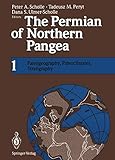Paleogeography, paleoclimates, stratigraphy [Libro electrónico] / editores: Peter A. Scholle, Tadeusz M. Peryt, Dana S. Ulmer-Scholle
Scholle, Peter A [editor] | Peryt, Tadeusz M [editor/a] | Ulmer-Scholle, Dana S [editor/a].
Tipo de material: Libro
en línea Series Editor: New York, New York, United States: Springer-Verlag, c1995Descripción: vii, 261 páginas : ilustraciones ; 28 centímetros.ISBN: 3540573534; 0387573534; 9783642785955 (Print); 9783642785931 (Online).Nota de acceso: Disponible para usuarios de ECOSUR con su clave de acceso Nota de bibliografía: Incluye bibliografía Número de sistema: 56205Contenidos:Mostrar
Resumen:
Libro
en línea Series Editor: New York, New York, United States: Springer-Verlag, c1995Descripción: vii, 261 páginas : ilustraciones ; 28 centímetros.ISBN: 3540573534; 0387573534; 9783642785955 (Print); 9783642785931 (Online).Nota de acceso: Disponible para usuarios de ECOSUR con su clave de acceso Nota de bibliografía: Incluye bibliografía Número de sistema: 56205Contenidos:Mostrar
Resumen:| Tipo de ítem | Biblioteca actual | Colección | Signatura | Estado | Fecha de vencimiento | Código de barras |
|---|---|---|---|---|---|---|
| Libros | Biblioteca Electrónica Recursos en línea (RE) | Acervo General | Recurso digital | ECO40056205648 |
Incluye bibliografía
Chapter 1. Overviews.. Chapter 2. Paleoclimates.. Chapter 3. General stratigraphic tools.. Chapter 4. Biostratigraphic studies.. Bibliography
Disponible para usuarios de ECOSUR con su clave de acceso
The Permian was a remarkable time period. It represents the maximum stage of Pangean continental assembly, includes a major global climatic shift from glacial to nonglacial conditions (icehouse-greenhouse transition), and is ter minated by one of the most profound faunal/floral extinction events in the Earth's history. In addition, Permian oceans, although poorly understood, must have had some quite unique characteristics. Permian seas reached the most extreme values of carbon, sulfur, and strontium isotopic ratios ever achieved in Phanerozoic time, and the isotopic ratios of all three elements abruptly returned to more "normal" values at, or very close to, the Permo Triassic boundary. Finally, the Permian is marked by an abundance of important sedimentary mineral resources. It has large fossil fuel concentra tions (coal, oil, and natural gas), enormous phosphate reserves, and very extensive evaporite deposits, including gypsum, anhydrite, and halite, as well as a variety of potash salts. Study of the Permian has been hampered, however, by a number of factors. These include a scattered geologic literature (presented in a variety of languages), a confusing regional and global stratigraphic framework (based, in part, on inadequate type sections), and largely provincial, often poorly correlatable faunas. All have contributed to the sparsity and inadequacy of overviews of this critical geological interval. The two volumes attempts to bring together some of the widely scattered observations about these fascinating rocks, at least for the northern (pre dominantly nonglacial) parts of Pangea. eng
Disponible en línea
Disponible en formato PDF
Subscripción a ELSEVIER 26 de diciembre del 2013
